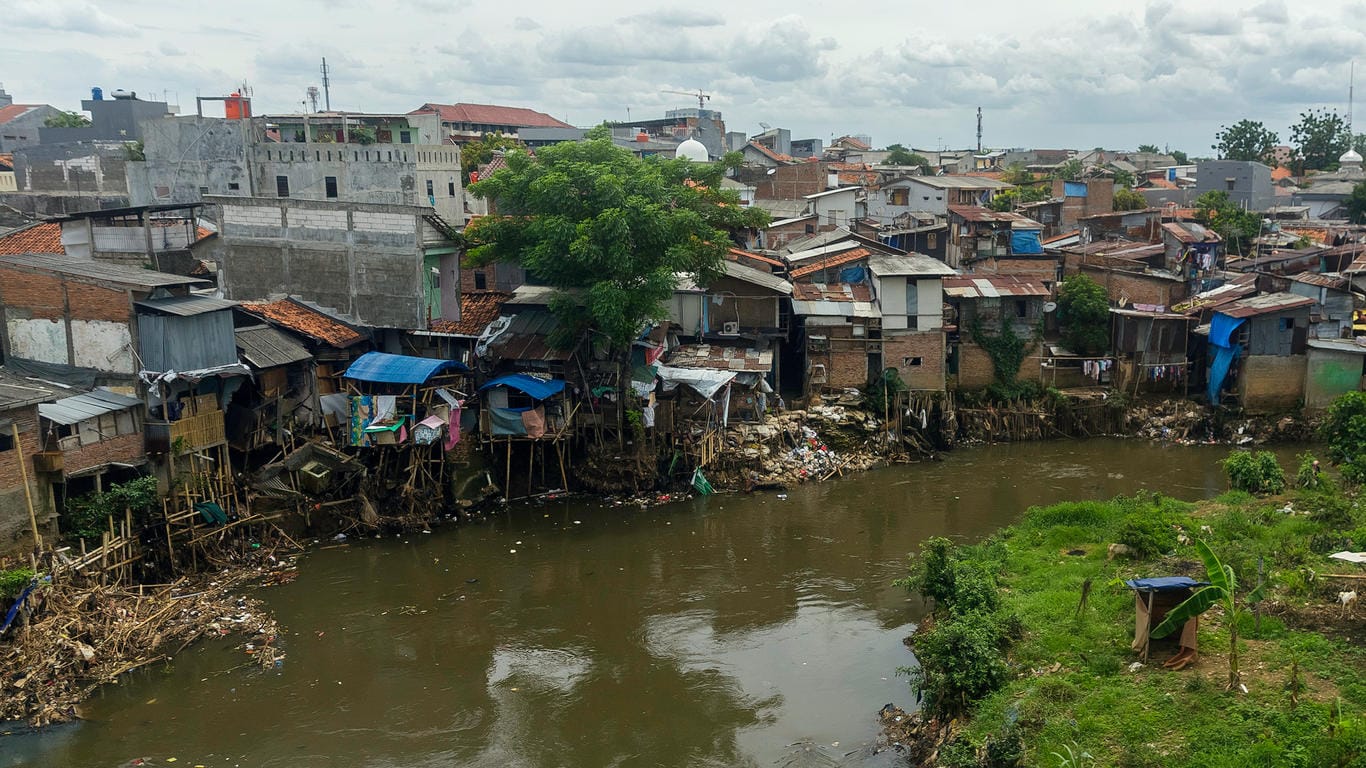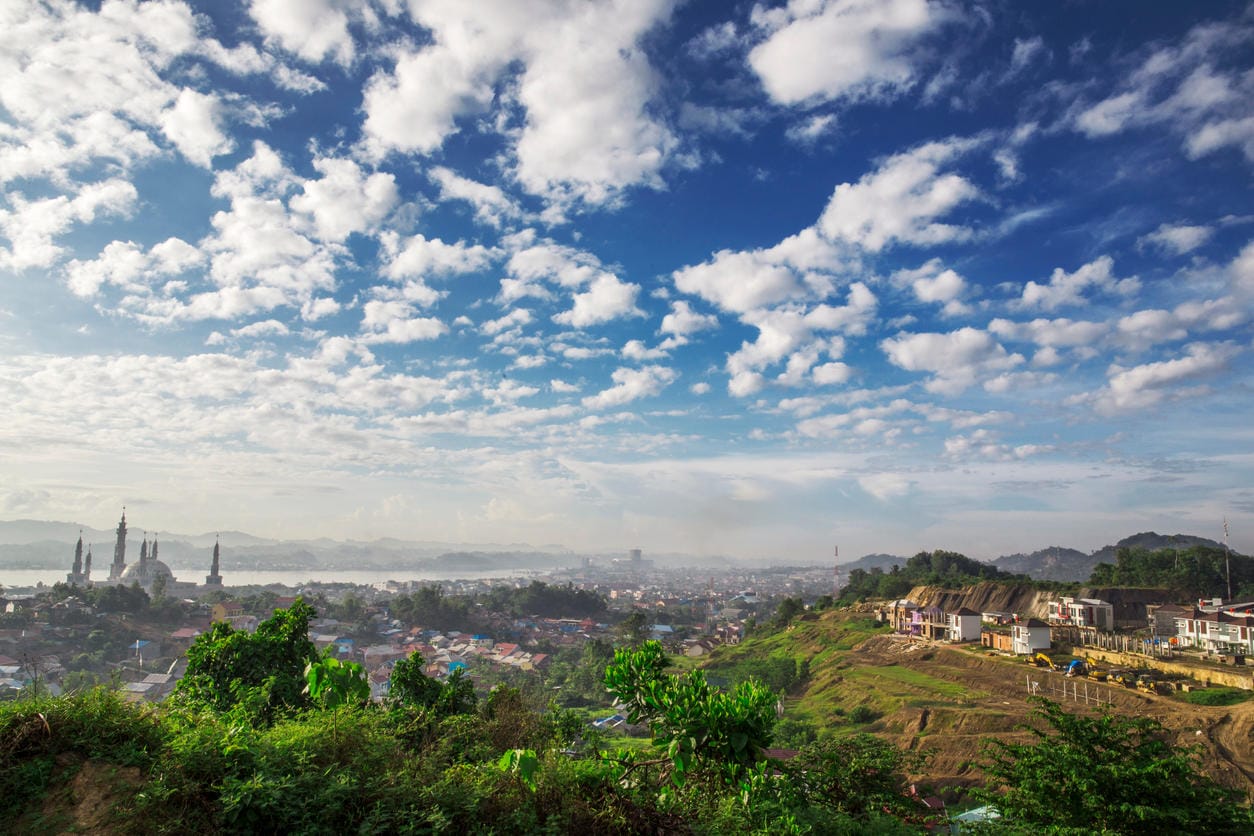
Can Indonesia solve the problems plaguing its overcrowded capital, Jakarta, by moving 1.5 million public servants to East Kalimantan on the island of Borneo?
The idea has been in the works for decades. Now Indonesia’s President, Joko Widodo, has announced that construction of the city will start next year, pending parliamentary approval.
Although many nations have purpose-built capital cities – Malaysia, Myanmar, Australia and Brazil among them – urban designer and architect Maud Cassignau, from Monash Art, Design and Architecture, believes Indonesia is the first country to create a city for environmental reasons.
In recent months the city has recorded worse pollution than Delhi and Beijing – both infamous for their poor air quality. Traffic congestion is also severe in Jakarta, contributing to the smog and costing the economy an estimated 100 trillion rupiah ($A10 billion) annually.

But flooding is arguably a worse problem. Jakarta was built on a swamp, and is intersected by 13 rivers. The city is sinking by up to 25 centimetres a year, and so is the sea wall designed to protect low-lying areas to the north. Heavy demands for drinkable water, largely extracted from underground wells, is contributing to the phenomenon. Models predict that 95 per cent of the city could be flooded by 2050.
As if this weren’t enough, earthquakes and volcanoes also pose a threat in Java. “Urban systems are less likely to be destroyed by a single event if you decentralise services,” Dr Cassigneau says. “It seems attractive to build new cities because you can create a situation which is pristine. You’re in a free space. It’s much easier to create something progressive, and which leaves old problems behind.”
Jakarta, the largest city in Southeast Asia, will remain Indonesia’s commercial and financial centre. It’s one of the most populous urban agglomerations on Earth, home to about 30 million people, with 10 million in central Jakarta and the remainder in the regions surrounding the city.
More problems?
Yet separating Jakarta’s economic and administrative functions could create a separate set of problems, Dr Cassigneau warns, if it results in an elite group of bureaucrats making decisions that affect people who are distant from them – geographically and socioeconomically.
The cost of moving the capital 1000 kilometres north over 10 years is expected to be 466 trillion rupiah ($A48.7 billion). The Indonesians are planning to contribute 19 per cent, with the balance coming from public-private partnerships and private investment. Dr Cassigneau warns the arrangement could create “a debt trap”, particularly if the city is not economically sustainable.
The Nobel Prize-winning economist Paul Romer has argued that creating cities for an elite class initially works well for investors building high-profit apartment blocks. But he points out that successful cities are home to people from a range of backgrounds, who gather for many reasons.
“It seems attractive to build new cities because you can create a situation which is pristine. You’re in a free space."
New cities can work if they’re located in a transport hub, for instance, where people gather to exchange goods and ideas. Dr Cassigneau gives the unlikely example of Khorgas, rapidly rising on the China-Kazakhstan border on the New Silk Road, on what was once an empty plateau. In Europe, the historic city of Lille in northern France is now a hub for Europe’s high-speed rail network, and has become a centre of investment and creativity.
The Indonesian government says its new capital will be built on existing state land near the port city of Balikpapan and the provincial capital of Samarinda. Dr Cassigneau says it’s not clear whether the new city will be integrated with the existing urban centres – as she hopes – or whether it will be constructed as a separate enclave.

President Widodo has described the location, in the geographic centre of Indonesia, as “very strategic”. Weeks later, the neighbouring palm oil-producing regions of West and Central Kalimantan became the site of devastating forest fires. Many were deliberately lit only a month after President Widodo declared a permanent moratorium on deforestation in Indonesia. The gap between his rhetoric and the reality has left observers sceptical about his claims that the new capital will provide an opportunity to rehabilitate the forest around East Kalimantan.
But if the Indonesians resist excessive land clearing, the new capital could provide an opportunity to create a climate-adapted urban centre in the tropics, Dr Cassigneau says. Glass towers in the international style are not a sustainable model, she points out. “There’s interesting things you can do. You can use passive strategies to keep the buildings cool in the tropical climate, so you don’t need air-conditioning, by looking at how the buildings are oriented, using cross-ventilation to cool, shading measures like awnings, or perforated facades. Or you could find ways of building that draw on local ways of living.
“Water-sensitive urban design looks at ways of integrating nature in the city, capturing water in wet seasons, retaining it, purifying its wetlands and using it in dry seasons. It can be used to prevent flooding.”
Tackling Jakarta's existing problems
Dr Cassigneau also hopes the congestion, pollution and flooding in Jakarta that prompted the move to Kalimantan will be tackled once the public servants have left.
She gives the example of flood mitigation measures introduced in the Dutch port city of Rotterdam, including water squares that are designed to fill with rain when needed, but can otherwise serve as amphitheatres or gathering places. In the Indian city of Chennai, which is also prone to flooding, authorities have investigated restoring the lakes that once dotted the city.
Despite its problems, Jakarta is expected to keep growing – more and more people are moving to cities, not only in Indonesia, but throughout the world. “As the world is urbanising more, a lot of cities, especially in the tropical band, are very vulnerable,” Dr Cassigneau says. “So you’re likely to see more cities facing this question of relocation.”





